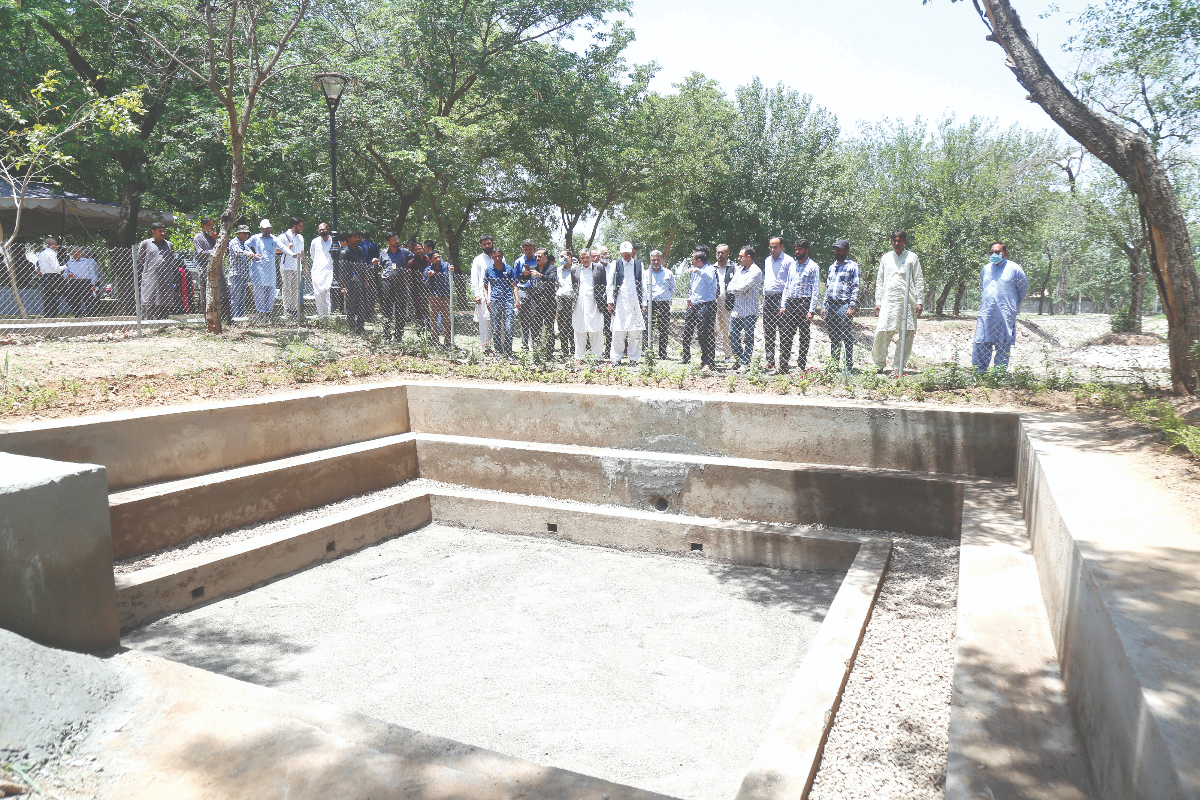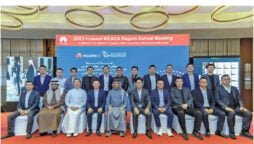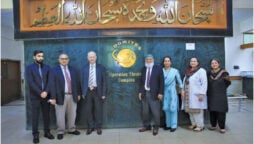
An Ode to the Elixir of Life
Water scarcity posing serious challenges
A huge gap between the levels of recharge and extraction of groundwater is causing steady drop in the aquifers both in the rural and urban areas of Pakistan.
Excessive extraction of groundwater for fulfilling agricultural, industrial and domestic needs, coupled with unwise use and wastage of precious resources, owing to the lack of water governance, metering and pricing are posing serious challenges.
Disappearance of natural groundwater recharging sites like doongi grounds, parks and greenbelts along roads in the major cities and evaporation in the rural areas are only worsening the situation in Pakistan, leading towards serious challenges of climate change.
Drop in aquifers is not the only issue, as the quality of groundwater is also depleting with higher bacteriological and heavy metal contamination, putting huge population at a risk of arsenic poisoning.
Bad water management is a serious issue. Around 1.2 million tube-wells, including 0.8 million in Punjab are extracting groundwater for agricultural purposes. As such, the aquifer is getting drained faster than it can be replenished. Despite water intensive irrigation, the per acre yield in Pakistan is quite low at 0.13kg/m3, compared with India at 0.39kg/m3 and China at 0.82kg/m3.
Groundwater is critical to augment more than 90 per cent of the water supplies for all domestic needs in every city across Pakistan.
According to the WWF-Pakistan, groundwater in Lahore is depleting at the rate of around 2.5- to 3-feet/annum. Water table is projected to drop below 230-feet in most parts of Lahore by 2025 if the present trend continues.
Islamabad is also a city facing serious water-related issues such as poor supply, sanitation, and hygiene. The Capital Development Authority (CDA) manages the primary water supply through the Simly and Khanpur dams. Groundwater caters to around 30 per cent of the water supply in selected sectors. The present water supply of around 45 million gallons/day (MGD) is not enough to meet the demand of around 246MGD for a population of just over two million.
As such, almost every household has installed a pump to extract groundwater. It is anticipated that the gap between the demand and supply will continue to increase and with it the pressure on the groundwater resources, which are already scarce.
The groundwater levels in Islamabad have declined from 15 metres to 100 metres during the last decade. Uncontrolled domestic groundwater use will not meet the increasing demand of the capital city.
Experts believe the population pressure and climate change have greatly depleted the groundwater resources and potential solutions require some out-of-the-box thinking to sustain and replenish it. Water should be billed and paid for, especially in agriculture, which uses up to 97 per cent of all the surface water and a similar proportion of groundwater, they said.
The water metering in big cities and revised electricity tariffs for tube-wells will reduce consumption by stopping wastages, the experts said, adding that to create a balance between groundwater recharge and discharge, artificially recharging an aquifer is of paramount importance.
The Pakistan Council for Research on Water Resources (PCRWR) has reported that if only 50 per cent of the runoff from the urban area (220km2) could be effectively harvested, the groundwater recharge equal to the present shortfall of around 200MGD could be achieved. There are several methods used to artificially recharge groundwater aquifers, including redirecting water across a land surface through streams, infiltration ponds, or simply injecting water directly into the ground through injection wells.
A detailed hydrogeological analysis of the study area was conducted using the Soil and Water Assessment Tool (SWAT) model to identify the potential sites for groundwater recharge wells. The SWAT model delineated the ICT watershed into 20 sub-basins. Based on the modeling results and consultations with the stakeholders, Kachnar Park (Sector I-8) was selected as the pilot recharge site. Instruments were installed to measure the groundwater quality, levels, rainfall and a flow metre to determine the amount of rainfall injected into the aquifer.
A net increase of 0.7 metres in the water table was recorded through a single recharge event of 475,000 litres of runoff on May 13, 2022. Similarly, the groundwater quality was also improved from 0.45 to 0.40dS/m, which is an added advantage of this useful intervention. The site will harvest the rainwater, especially during the monsoon period and manage urban flooding challenges and groundwater resource sustainability for the sub-sector.
So far, 1.90 million gallons of water have been recharged into the aquifer against the rainfall of 589mm during May-September 2022. Moreover, a rise in the water table of 4.8 metres (39.5 to 34.7) has been recorded.
Talking to a group of journalists, the experts said that the groundwater recharge well is a cost effective nature-based solution to revive aquifers and mitigate the risk of urban flooding through most modern technology available at the local level.
The Institute of Urbanism, International Water Management Institute (IWMI), PCRWR and Heinrich-Böll-Stiftung (HBS) arranged a two-day media fellowship on “Harvesting Rainwater for Urban Flood Management” that comprised field visits to various rainwater harvesting sites in the federal capital and Lahore.
The newsmen also visited the sites of the recharge wells installed at PCRWR office premises and Kachnar Park.
Dr Mohsin Hafeez, country representative, Pakistan and Regional Representative — Central Asia, IWMI, said that the ill-planned housing societies, construction on river beds and encroachments on water flows are causing mega disasters.
“The climate change has a major impact on water and there is a nine-month drought and three months of rain. We have insufficient infrastructure, as no dams have been constructed in the past 50 years,” he said.
For Hafeez, the artificial groundwater recharge site helps understand the amount of rainfall added to the aquifer and its quality. Prior to establishing this site, the hydrological modelling of the entire Islamabad was done, which helped identify seven sites where groundwater could be recharged.
“In Islamabad, on an average, groundwater is depleting at one metre/annum. In the last five months, approximately 1.90 million gallons of water has been added to groundwater against the rainfall of 589mm (from May to September 2022). Moreover, a rise in the water table of 4.8 metres (39.5 to 34.7) has been recorded. This water was earlier used to add to flooding in Nullah Lai but now is added to groundwater. The quality and quantity of groundwater has improved and has also helped reduce the damages caused by the floods,” he said.
The nature-based solutions are a viable option, which can contribute towards flood regulation, he noted.
“In India, water is being pumped through injection wells. Groundwater management is important for Integrated Water Resources Management (IWRM),” Hafeez said.
“A 4.5mm water table was improved at Kachnar Park artificial recharge well. We are implementing it on 100 sites in the capital in collaboration with the CDA and PCRWR,” he said, adding that I-8 Kachnar Park recharge well possessed the most modern technology, which was implemented after hydrological modelling of Islamabad in which seven potential sites for groundwater recharge were identified.
Dr Muhammad Ashraf, chairman of the PCRWR, said that the water crisis is a serious issue, which is worsening in major cities.
“The groundwater recharge solutions are the need of the hour,” he said, adding that Pakistan is facing environmental degradation, as in one season it had drought and in another, there had been floods.
“We have to increase water storage at every stage. We have to develop large, medium and small dams as per the requirements,” he added.
The rainwater storage solutions like artificial lakes at housing societies or artificial recharge wells will help manage rainwater.”
“The 60 per cent of irrigation requirements are fulfilled from groundwater resources. We will have to either reduce the groundwater extraction or increase water table recharge,” he added.
Flash Floods, he said, cannot be mitigated in the federal capital or other mega urban areas due to encroachment on Nullahs.
“Watershed management is imperative for floods and drought management, whereas catchment areas need to be enhanced,” Dr Ashraf said.
The artificial recharge well’s purpose is to intercept rainwater near the catchment area and inject it into the groundwater well.
“It will help save water from evaporation, ponding and pollution,” Dr Ashraf said, adding that the CDA is establishing 100 recharge wells and 20 monitoring stations in the federal capital.
A PCRWR official briefed the journalists that Kachnar Park recharge well was the only site fully instrumented where a water gauge was installed along with the automatic data drivers that monitor water inflows and temperature shifts.
From May to September, 78mm rainfall was recorded in the capital and 1.9 million gallons of rainwater was conserved on this site, he added.
CDA Deputy Director General Sardar Khan Zimri said that the recharge wells were proposed to build bye-laws to recharge groundwater by adopting the solution on the households.
A total of 62 recharge wells have been installed in the federal capital, of which eight to 10 have failed due to more groundwater level at the sites, he said, adding that 50 of them are operational.
The newsmen also visited rainwater harvesting sites in Lahore. The first site was at Bagh-e-Jinnah where a 1.4 million gallons capacity underground water storage facility was established with the cost of Rs140 million. The site comprised a catchment area of 30 acres and a ponding area of three acres. The facility has been developed to avoid water stagnation in the area. The water tank had two pumps to move six cusecs to the other site in case of above 100mm rainfall.
Two more underground water tanks are near completion at Sheranwala Gate and Alhamra Arts Council.
Catch all the Economic Pulse News, Breaking News Event and Latest News Updates on The BOL News
Download The BOL News App to get the Daily News Update & Live News.








 Read the complete story text.
Read the complete story text. Listen to audio of the story.
Listen to audio of the story.